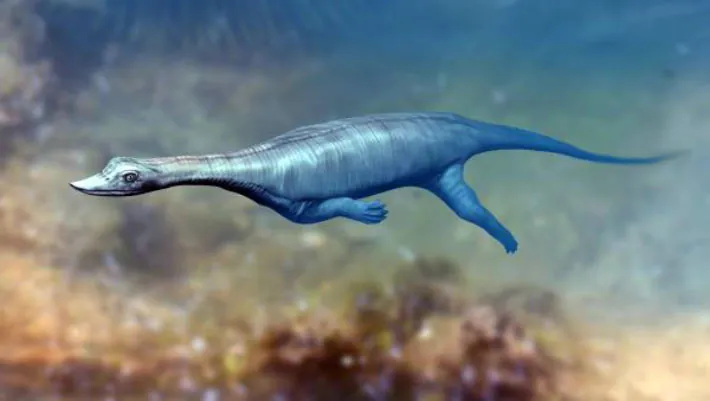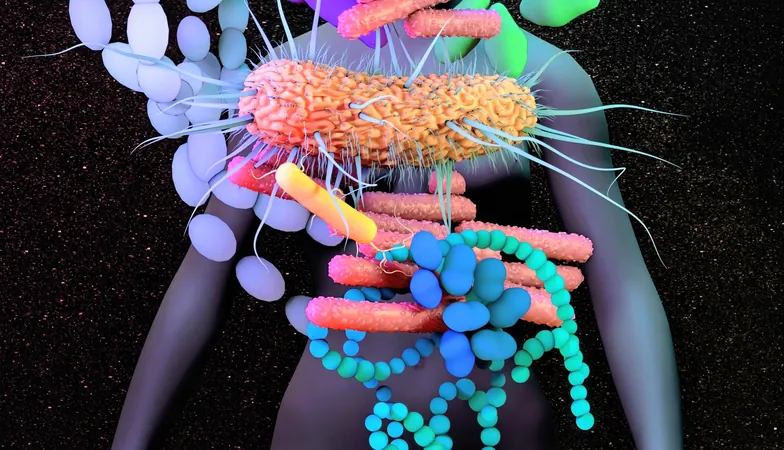
Groundbreaking Discovery: New Triassic Marine Reptile Uncovered in China!
2024-11-18
Author: Arjun
New Species of Pachypleurosaur Discovered
In an exciting revelation for paleontology enthusiasts, a new species of pachypleurosaur has been identified from the Middle Triassic period in southwestern China. Known as *Dianmeisaurus mutaensis*, this intriguing marine reptile roamed the waters of what is now China approximately 245 million years ago, during the Anisian age of the Middle Triassic epoch.
The Characteristics of *Dianmeisaurus mutaensis*
The *Dianmeisaurus mutaensis* species belongs to a group of primitive sauropterygian reptiles known as pachypleurosaurs, which fascinatingly resemble aquatic lizards. These creatures featured small heads, elongated necks, paddle-like limbs, and long, deep tails—an evolutionary design that made them adept swimmers in their ancient marine environments.
Discovery and Fossil Analysis
The well-preserved skeleton of an immature *Dianmeisaurus mutaensis* was initially discovered in an abandoned quarry near Muta village in Luxi County, Yunnan province. The fossil was embedded in dark-gray micritic limestone and measured an impressive 99.2 mm (4 inches) in length. Notably, the fossil was carefully extracted and restored in a paleontological laboratory using specialized tools.
Phylogenetic Insights and Evolutionary Significance
In an analytical twist, researchers discovered that *Dianmeisaurus mutaensis* is closely related to *Dianmeisaurus gracilis*, another small pachypleurosaur found in the Middle Triassic Luoping biota. The new species exhibits distinct morphological features, which include unique traits of its skull and vertebrae structure that help paleontologists understand its place within the evolutionary tree.
Implications for Marine Reptile Evolution
Moreover, the study presents a reevaluation of the interrelationships among eosauropterygians, revealing that traditional views regarding these marine reptiles might need an overhaul. The phylogenetic analysis indicates that the commonly accepted monophyly of Eusauropterygia may not hold true, suggesting a reevaluation of how we perceive the evolutionary lineage of these fascinating creatures.
Future Research Directions
The groundbreaking research not only contributes to our understanding of marine reptile evolution but also suggests that the origins of pachypleurosaurs might trace back to the eastern Tethys region, urging for further study on early Anisian pachypleurosaurs to test this intriguing biogeographic hypothesis. These remarkable findings were published in the Swiss Journal of Palaeontology, marking a significant step forward in the field of paleontology and hinting at more thrilling discoveries waiting to be unearthed from our planet's ancient past!



 Brasil (PT)
Brasil (PT)
 Canada (EN)
Canada (EN)
 Chile (ES)
Chile (ES)
 España (ES)
España (ES)
 France (FR)
France (FR)
 Hong Kong (EN)
Hong Kong (EN)
 Italia (IT)
Italia (IT)
 日本 (JA)
日本 (JA)
 Magyarország (HU)
Magyarország (HU)
 Norge (NO)
Norge (NO)
 Polska (PL)
Polska (PL)
 Schweiz (DE)
Schweiz (DE)
 Singapore (EN)
Singapore (EN)
 Sverige (SV)
Sverige (SV)
 Suomi (FI)
Suomi (FI)
 Türkiye (TR)
Türkiye (TR)